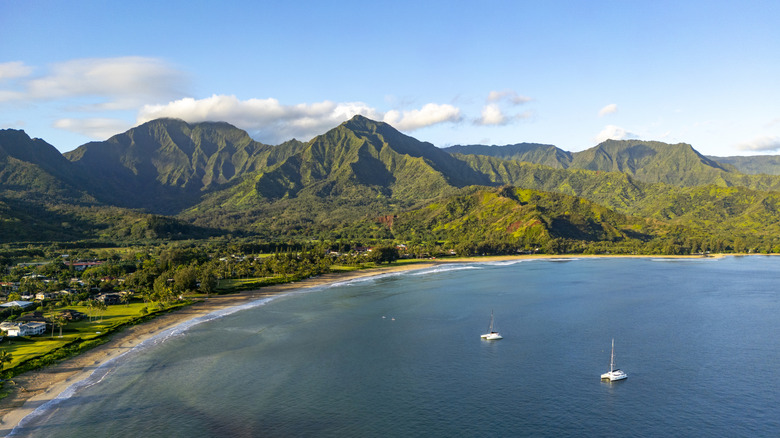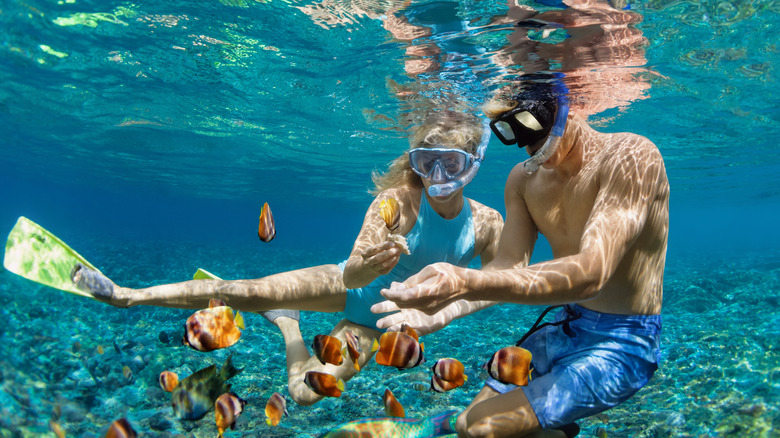
Hawaii is home to some of the most iconic beaches in the world, drawing millions of visitors each year to its turquoise waters teeming with marine life. One of the best ways to experience the island state's beauty is snorkeling, a seemingly gentle activity fit for most tourists who know how to swim. However, beneath its appeal as a fun experience, there's a sneaky danger that comes with snorkeling, which is actually one of the deadliest activities for visitors in the islands. A University of Hawai'i
at Mānoa paper details how drowning is the leading cause of death among tourists, and snorkeling is involved in nearly 30% of those fatalities, making it more dangerous than surfing, swimming, or scuba diving. From 2013 to 2022, Hawaii recorded nearly 800 fatal drownings, and a growing number of those are now believed to stem not from panic or inexperience, but from a medical condition called Snorkel-Induced Rapid Onset Pulmonary Edema, or SI-ROPE.
SI-ROPE occurs when breathing through a snorkel creates a vacuum-like negative pressure in the chest, which can cause fluid to seep into the lungs. Victims experience a rapid onset of hypoxia or low oxygen, which leads to faintness, confusion, and in many cases, sudden unconsciousness and drowning. Unlike traditional drowning, SI-ROPE incidents often happen in calm conditions and without any signs of panic. Former Maui Ocean Safety Chief Colin Yamamoto explained in an interview with KHON2 that the re-inhalation of exhaled air through snorkels, especially full-face masks or those with anti-splash valves, can lower oxygen levels and raise carbon dioxide concentrations, making the activity far more strenuous than it appears. He described how "anytime you exhale, that snorkel is all filled with your exhaled air; so, your next breath, you're going to breathe in that exhaled air. So, that's why you have a lower level of oxygen and a higher level of carbon dioxide."
Read more: The 5 Cheapest Islands In Hawaii For Your Next Tropical Vacation
How To Prevent SI-ROPE

Efforts to raise awareness and regulate snorkeling safety have included a comprehensive study led by the Hawaii Tourism Authority, which tested 50 snorkel types for safety against SI-ROPE. Yet attempts to pass legislation requiring rescue teams to document gear type, health conditions, and other vital information at the scene have repeatedly failed. While some popular areas such as Hanauma Bay require a short safety briefing, many of Hawaii's best snorkeling spots do not include any direct education on the risks associated with SI‑ROPE.
Understanding how SI‑ROPE happens is critical for prevention. It's important to know that while snorkelers who are over 50 or with undiagnosed cardiac issues are especially susceptible to this phenomenon, even young and completely healthy tourists succumb to it. To help reduce risk, it's important to choose simpler snorkels that allow for easy, natural breathing rather than full-face masks that can increase resistance and be difficult to remove quickly. Practicing with your gear closer to shore before snorkeling in deeper water can also help build confidence and awareness. And always snorkel with a buddy or even with a trainer, especially if you're new to the ocean. Lifeguarded beaches are the safest places to snorkel, with drowning incidents much less likely to occur when a safety professional is watching. By following these tips, staying within your comfort zone, and choosing the right equipment, you can enjoy Hawaii's vibrant underwater world with greater peace of mind.
Ready to discover more hidden gems and expert travel tips? Subscribe to our free newsletter for access to the world's best-kept travel secrets.
Read the original article on Islands.













